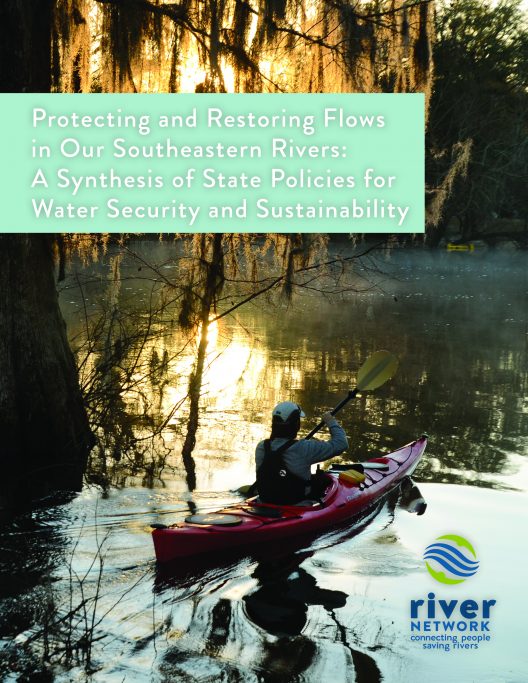Protecting and Restoring Flows in Our Southeastern Rivers
The Southeast River Flows Peer Learning Network (Flows Network) is collaborative effort to protect river flows in the southeast.
The Flows Network provides a platform where community-based river and conservation groups learn from each other and other experts, leverage their skills and efforts, create new alliances, spark innovative and collaborative approaches, and work together to break through the barriers encountered in protecting river flows.
Together, the Flows Network has formed working groups to address priority issues and participated in in-person workshops, webinars, and online peer-discussions. To support these collaborative efforts, River Network also publishes a monthly newsletter and is developing a resource library specific to southeast river flows issues, supporting state-level efforts to protect river flows, coordinating learning opportunities on priority topics, building the network and network connections, and supporting Flows Network working groups. To learn more or get involved, email April Ingle.
To support work to protect and restore river flows in the southeast, River Network also published: Protecting and Restoring Flows in Our Southeastern Rivers: A Synthesis of State Policies for Water Security and Sustainability. The first edition of the report was published in 2016 and an updated second edition was released in May of 2019.
 The report covers a comprehensive set of policies starting with the scientific foundations of water budgets and moves to supply management and flow protection and then demand management and finally the management of the built environment.
The report covers a comprehensive set of policies starting with the scientific foundations of water budgets and moves to supply management and flow protection and then demand management and finally the management of the built environment.
The report synthesizes the status of these policies in five Southeastern states – Alabama, Georgia, North Carolina, South Carolina, and Tennessee – and offers recommendations and models for how these policies can be strengthened.
The report takes an in-depth look at the following state policies in Alabama, Georgia, North Carolina, South Carolina, and Tennessee:
- Water budgets– Policies relating to gathering and utilizing information on how much water is being used and returned to river basins. (See also River Network’s online science module on Environmental Flows and Water Security with several components focused on understanding and developing water budgets.)
- Managing supply – Policies relating to management of water supply and river flows, including water withdrawal permitting and tracking, interbasin transfer evaluation and water planning.
- Flow protection – Policies relating to both science-based environmental flow criteria as well as mechanisms or policies to apply the criteria, including water allocation and withdrawal permitting policy and water quality standards.
- Reducing Demand – Policies relating to water conservation and efficiency, including managing water loss and integrating conservation and efficiency into withdrawal requirements.
- Built Environment – Policies relating to reducing the demand for water and creating more natural systems in the “built environment” that contribute to and replenish our streams and rivers. One example is going above and beyond the federal requirements and requiring more water efficient fixtures and appliances. Another is encouraging or requiring development, through stormwater permitting, to more closely mimic natural landscapes and hydrology by retaining certain amounts of water on-site.




